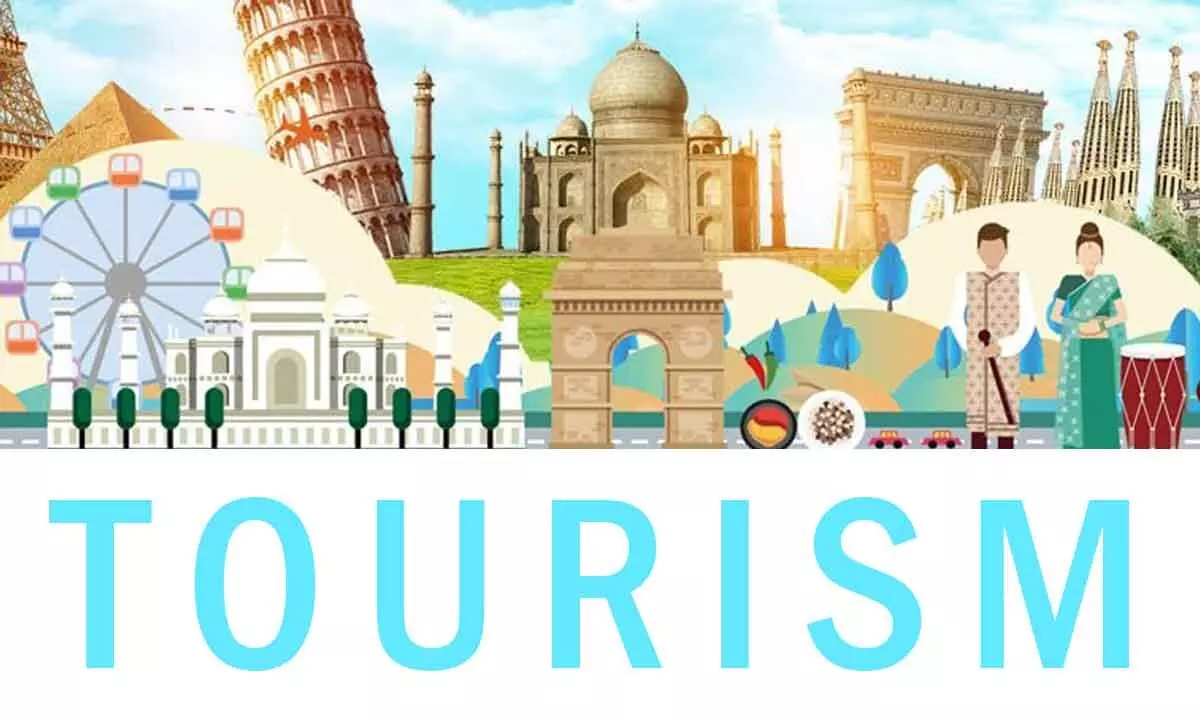Budget expectations: Tourism industry looks for a major all-round boost
Travel and tourism industry is growing at an annual rate of 4.41%
image for illustrative purpose

GST rates for hospitality are one of the highest in the world. This is making both domestic and inbound tourism very expensive. India is facing tough competition from neighbouring destinations, especially due to the higher rate of GST, among other factors which make the total tourism package to India an expensive proposition
The travel and tourism sector is a significant contributor to India’s GDP and the proposed National Tourism Policy intends to target GDP contribution of $one trillion by 2047, which stood at $150 billion in 2024. In addition to foreign exchange earnings, our sector provides valuable skill development and employment generation across travel, tourism and allied industries. Support from the government would be invaluable in expediting revival post pandemic and harnessing the benefits of this powerful sector via rationalization of tax and budgetary outlay on infrastructure.
The travel and tourism industry is growing at an annual rate of 4.41%. By 2026, the projected market value will be just under $1 billion.
Granting the much-awaited plea of the sector will help in easier access to institutional credit; increase the country’s tourism sector’s competitiveness in the international arena and create a long-term path for its sustainable growth.
Travel contributes significantly to the services sector in India and generates employment for millions. To recognise this contribution to society and the economy, experts suggest that tourism exports be treated at par with other exports and services and such transactions may be zero rated for GST without stopping the flow of input credits.
GST rates for hospitality are one of the highest in the world. This is making both domestic and inbound tourism very expensive. India is facing tough competition from neighbouring destinations, especially due to the higher rate of GST, among other factors which make the total tourism package to India an expensive proposition.
The system of GST shifting to different slabs in the same hotel on different dates – under/over 7500 room rate – creates compliance issues. It also spills over to F & B. Therefore, we suggest introducing one flat GST slab @ 12 % at all times to all hotels in the country.
The industry’s key expectations from the upcoming Union Budget would include: lowering of TCS for outbound travel and LRS remittances; LTA expansion to once a year against twice in 4 years to boost domestic tourism; reduction of TDS rate as this could adversely impact corporate travel spends; exemption of travel agents from section 53 of GST as it forms a major compliance and working capital challenge for travel agents.
Clarification on applicability of Section 194O on E-commerce would be of value - as the current definition covers facilities for ease of booking, even if the transaction is done offline.
Other factors include enhanced coordination between banks and CIBIL for timely and accurate information to enable quicker ECLGS loan disbursements.
From an inbound perspective: an alternate mechanism for SEIS to be developed for revival of the inbound tourism sector and granting it an exporter status; waiver of E-visa fees for 2023-24 aimed at promoting inbound tourism and thereby increasing GDP. Also, deeper marketing investments as part of the year-long G-20 summit initiatives to promote tourism, over all.
Further, there needs to be a collaborative approach that co-opts us wherever there are new amendments and technical/interpretation matters, says Mahesh Iyer, Executive Director & Chief Executive Officer, Thomas Cook India.
The hospitality industry expects the government to provide us with a uniform industry status across the country. Today, only some states have announced this status for us along with some very good measures to help the hospitality industry. However, this is not the case with all states. The central government should put in place similar policies across the country and that will really help the industry to grow. We must keep in mind that this industry provides a lot of employment and the multiplier effect of this industry doing well has a positive impact on the economy, he adds.
“We request the government and the finance ministry to provide us with long-term loans. In the hotel industry, there is a huge gestation period, which means, it takes three to four years to build a hotel, then another two to three years to stabilize, and then, the repayment starts, which causes a lot of distress. So internationally, hotel loans are 15 to 25 years,” he explains.
This implies that a similar structure should be implemented across the Indian hospitality industry as it will really not cause much NPAs and distress as in the past. Push-and-pull is sure to continue in 2025 and companies that can adapt quickly to the changing wants and needs of travelers are the best suited for future success.

